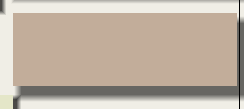(updated: 8/2017)
PageVRT_2
"Rub Tones": What Led to the Discovery of this Concept?
by David Langsather (c) 2017
...This whole interesting 'discovery' began with an article in the "Strad" (the string players monthly magazine published in London, England) magazine in an article investigating the validity of the "Messian" violin. {August 2001 Strad magazine}. In this article by John Topham and Derick McCormick, they reference a more extensive article covering their research published in the "Journal of Archaeological Society" March, 2000.
... In this second article the authors state (on page 190) ",,,it appears that only 15 of 31 Cremonese instruments with two piece fronts employed spruce from adjacent sections of the same tree..." and again: "...In a dendrochronological study of 25 violins by Guarneri del Gesu (Klein & Pollens, 1998) the use of unmatched sides was also noted, particularly during his later years. It seems therefore that the practice of precisely matching the wood on the bass and treble sides of the instrument that is virtually universal amongst 20th Centruy makers was considered less important in the classical period of violin-making."
...The authors then leave this subject without further comment; however, when I read this, my jaw dropped and I became very interested. Consider what they uncovered: 'del Jesu' made his most famous and sought after violins late in his life and during at that period he often used mis-matched wood for his two piece top plates as did many of the other famous Cremona violin makers of the early to mid 1700's!
.....Makers the last 100 or 150 years have not, univerally 'book matching' the top plates with wood grown next to each other on the same tree; and violins from this later period are usually found to be inferior to the earlier master instruments! It just occured to me that this might very well be one of the important reasons for the superiority of the master makers of the 1700's.
...Maybe it is high time we current makers learn a lesson from our betters!
...Now the question became: ' If I want to use wood from two different trees for the two halves of the top plate of the violins I make next, how will I decide which pieces of wood to mate together in the new top plates?' Or put another way: "How do I pick the two pieces of wood that will sound best together?"
...I had seven pieces of spruce top wood from Northern British Columbia (Engleman Spruce variety) and eight pieces from Europe (European Spruce). I decided to suspend the samples on two tightly tensioned chords and tap them in pairs to determine which two sounded best together. I stretched two pieces of mason's line tensioned to about 100 pounds of tension and set the two lines apart so they would touch the wood samples about 23% of their overall length in from each end (which gives the best response according to a textbook on acoustics). For the test, I put one of the Canadian pieces of spruce on the left side and the eight European pieces on the chords with space between each piece. My 27 year old son Brett (who has a fine musical ear) agreed to give me his opinion as to which pairing sounded best. He tapped the left (control) piece with a brass ended marimba stick continually and with the right hand tapped each of the other samples in turn with another marimba stick at the same time. After sampling the different combinations, he gave me his opinion at the the best sounding pair, which I wrote down.
...Next I changed the Canadian sample on the left side for another piece and repeated the test and noted the results. When we had gone through the same routine for all seven Canadian pieces I began to analyze the results. In each pairing, there was a definite 'best' sound, so I reasoned there must be a reason which I wanted to understand.
...My first idea was that perhaps the musical relation of the frequency of the differing pieces of wood gave the prefered sound. I used my HP professional sound analyzer to identify the frequency of each piece of top plate tone wood and wrote the information next to the best sounding pairings information. The results were that some of the best pairings were a musical fifth apart, some a fifth apart, some a musical third apart and some only a single musical note apart. So the frequency relationship was not the expaination; so what was?
...As I puzzled on this seeming mystery, I began to stroke the wood samples with a thin wood stick and found that the pairs chosen as 'best' sounding exhibited a 'rub tone', (generated by this light stroking of the surface of the wood) which matched. The 'rub tones' of not prefered pairings were different from each other. I went through all the prefered pairings and each time the common element was that each of two pieces of spruce wood for that prefered pairing had matching 'rub tones'!
...Now, I thought; if having matched 'rub toned' spruce wood for the top plate made such a significant difference when tapped together; perhaps the back plate maple wood should also match the top plate wood so that all pieces had matching 'rub tones'. I have a good selection of maple tone woods form different parts of the world and I did a similar test to the above to test this theory:
...I laid out a pair of previuosly selected spruce top plate wood on the left of my tensioned chords and then various maple back wood samples. I tested these by tapping the two spruce wood plate halves with matching 'rub tones' with left hand held tappers and with the right hand I tapped the various back plate wood samples in turn comparing the overall sound. I had about twenty five sets of back plate wood and went through all the possible combinations. The result was that when the top plate wood and the back plate wood had matching 'rub tones', that pairing of wood pieces sounded best together.
...In other words, the significant factor was that the wood pieces had matching 'rub tones'.
...Since then I have done similar comparison tests with other parts such as tailpieces and fingerboards will the same results.
...My strong recommendation is you select wood pieces for the entire instrument with identical 'rub tones'. This includes the maple strips for the ribs, internal corner and end blocks of wood; the glue linner strips, neck wood block, fingerboard, bridge, tailpiece (including the string contact cross bar), end pin, saddle, nut, tuning pegs, the bass bar and sound post. I would suggest that the purfling should also be matched the same way.
...I know that this is very difficult as there about 27 different 'rub tones' over the range of violin making wood stock but I also imagine this variability of wood might well explain why there are so few excellent sounding instruments produced today. It also illustrates that without this focused effort on your part, the chance that you will, at random, pick out matching 'rub tone' wood is slight at best.
*** IMPORTANT UPDATE: (8/2017): After additional research and testing; It is found that there is a particular Rub Tone wood that is best for Spruce, Maple, and Ebony violin wood parts... # 22 Rub tone is by far the best. Wood one number off this ideal (#21 or # 23) seems to have about a 10% tone drop off and # 20 or # 24 seem to have about a 20% tone drop off!
Please see other areas to help you identify the wood your have to see if it is good enough for a fine violin project (see video links under Wood Tone and Rub Tone to hear examples for comparison).

















